Bulbs
Flower Basics
Flower Beds & Specialty Gardens
Flower Garden
Garden Furniture
Garden Gnomes
Garden Seeds
Garden Sheds
Garden Statues
Garden Tools & Supplies
Gardening Basics
Green & Organic
Groundcovers & Vines
Growing Annuals
Growing Basil
Growing Beans
Growing Berries
Growing Blueberries
Growing Cactus
Growing Corn
Growing Cotton
Growing Edibles
Growing Flowers
Growing Garlic
Growing Grapes
Growing Grass
Growing Herbs
Growing Jasmine
Growing Mint
Growing Mushrooms
Orchids
Growing Peanuts
Growing Perennials
Growing Plants
Growing Rosemary
Growing Roses
Growing Strawberries
Growing Sunflowers
Growing Thyme
Growing Tomatoes
Growing Tulips
Growing Vegetables
Herb Basics
Herb Garden
Indoor Growing
Landscaping Basics
Landscaping Patios
Landscaping Plants
Landscaping Shrubs
Landscaping Trees
Landscaping Walks & Pathways
Lawn Basics
Lawn Maintenance
Lawn Mowers
Lawn Ornaments
Lawn Planting
Lawn Tools
Outdoor Growing
Overall Landscape Planning
Pests, Weeds & Problems
Plant Basics
Rock Garden
Rose Garden
Shrubs
Soil
Specialty Gardens
Trees
Vegetable Garden
Yard Maintenance
How to Care for Sansevieria Plant
How to Care for Sansevieria Plant. The sansevieria plant, also known as snake plant and mother-in-law tongue, is the perfect houseplant, particularly for people who tend to neglect their plants. It's tough, durable and highly tolerant of low light and poor soil conditions. The tall, narrow, sturdy leaves are stiff and pointed. Colors include dark...
The sansevieria plant, also known as snake plant and mother-in-law tongue, is the perfect houseplant, particularly for people who tend to neglect their plants. It's tough, durable and highly tolerant of low light and poor soil conditions. The tall, narrow, sturdy leaves are stiff and pointed. Colors include dark green, pale green, green edged with yellow, and variegated light green and yellow. Some species send up delicate flower spikes.
Sanseviera is a heat-loving plant, and thrives best at 55 to 75 degrees F. It will not tolerate cold or frost, and is only suitable for outdoor growing in USDA zone 10+.
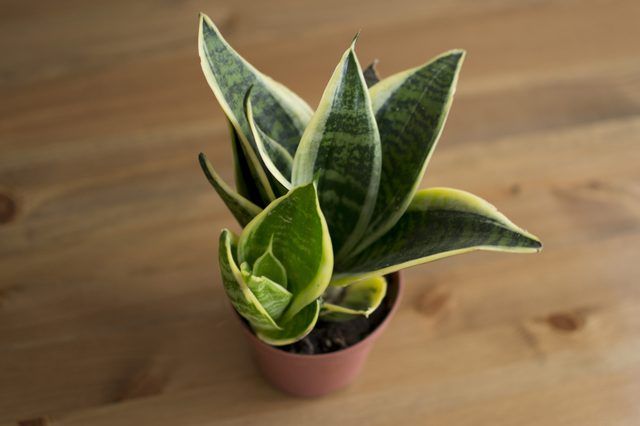
Things You'll Need
Low-nitrogen, 20-20-20 cactus fertilizer
Clay pot
Step 1
Position your potted sansevieria in a warm spot inside, in the best light available. Although it enjoys bright, indirect light, it will certainly tolerate very low lighting, if necessary.
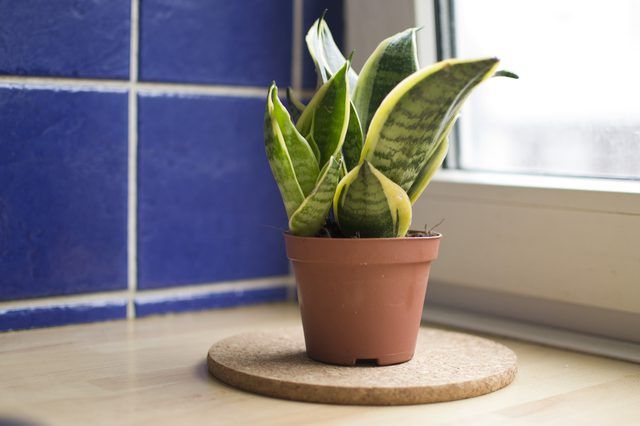
Step 2
Water sparingly no more than once or twice per week, or your sansevieria plant will rot. Allow it to dry out completely between waterings. Water only once or twice during the winter months. The sansevieria will offer its own critique on your watering habits. Leaves will wrinkle up and lean or droop when the plant lacks adequate water, and permanent root damage will occur from repeated, prolonged periods of drought-like conditions. Too much water will cause the leaves to turn into a slimy mess. If you notice leaves beginning to soften or appear greasy, pull them out immediately.
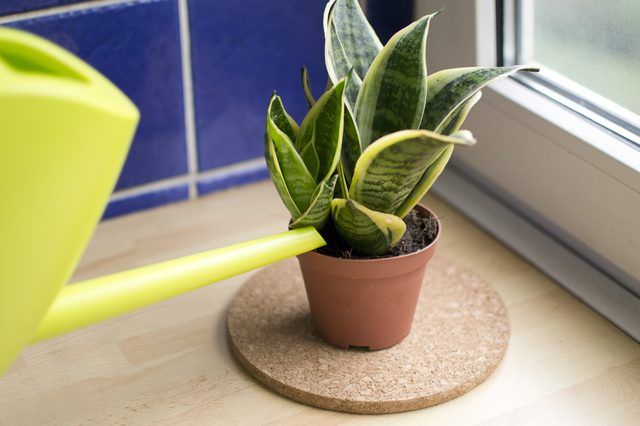
Step 3
Add about ? inch of soil to the pot each time the plant grows another 2 to 3 inches taller. This will help provide support for the tall leaves.
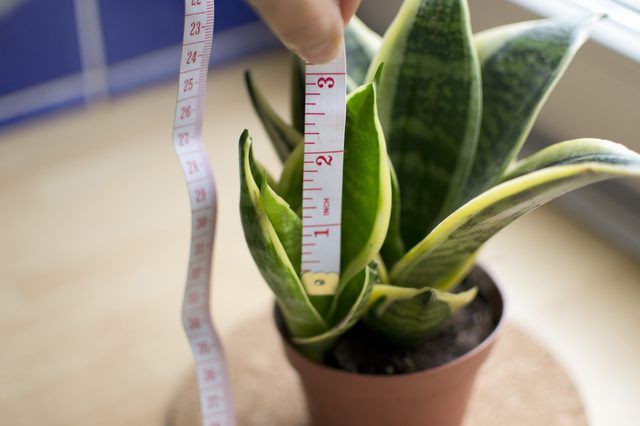
Step 4
Prune leaves from the plant only if they fall over. Don't try to stake them back up, as they are now bent and damaged. Simply cut them off at soil level as necessary.
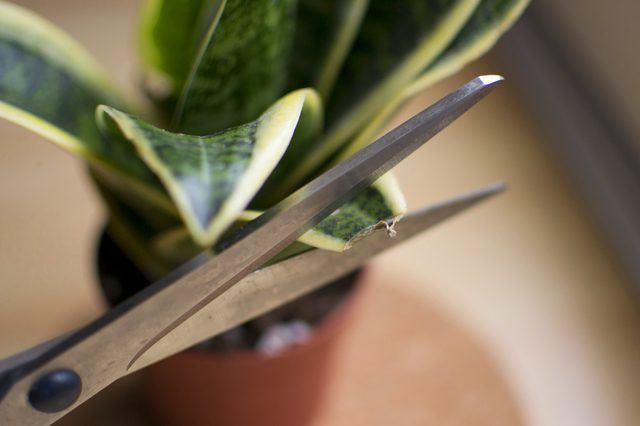
Step 5
Fertilize with a half-strength, 20-20-20, low-nitrogen cactus food once every month. The sansevieria requires very little in the way of fertilizer.

Step 6
Move the snake plant up to the next size clay pot annually. Clay pots are best because they're heavy, and serve to balance the top-heavy plants. This is very important, as these plants have been known to break pots when severely overcrowded.
